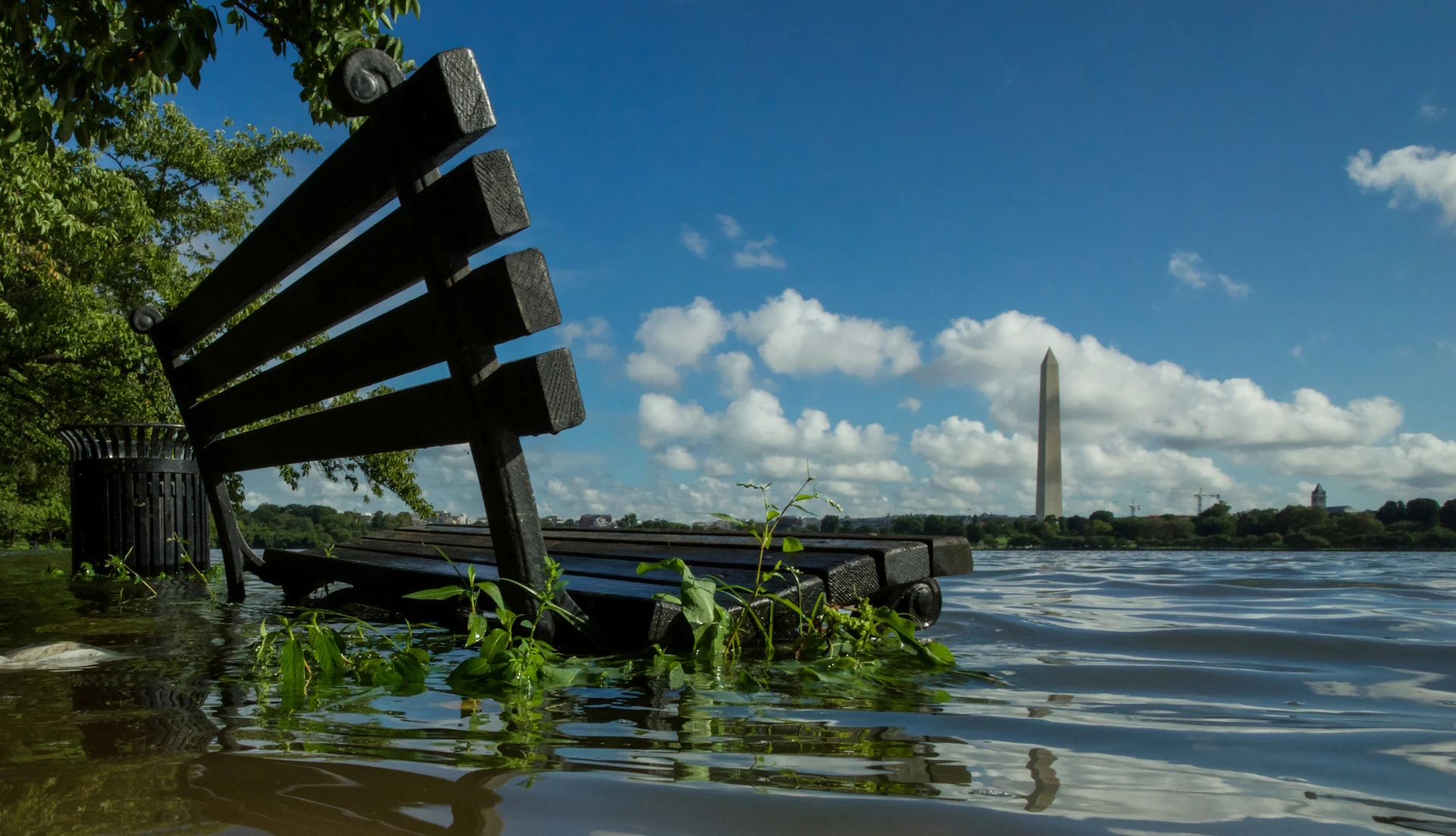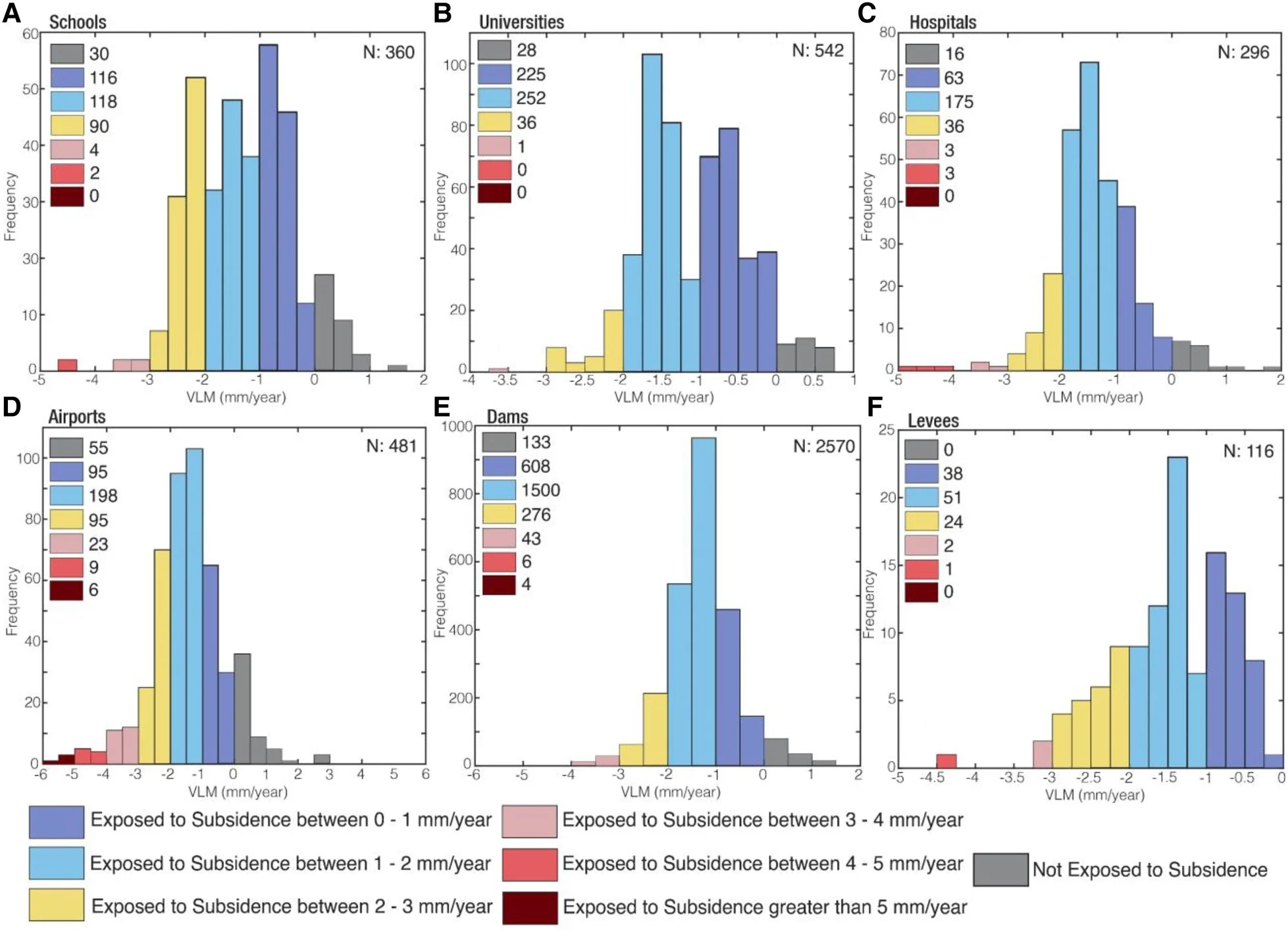
Millions at risk as land sinks beneath major coastal cities, study finds
Airports, subway tunnels, and nuclear plants are at risk along the U.S. East Coast as the ground sinks and sea levels rise
A recent study found that land subsidence—the ground sinking in elevation—is a growing hazard along the U.S. East Coast, and it’s one that puts millions of people at risk in some of the continent’s most densely populated cities.
Flooding is an ever-present hazard for communities along the coast. Every major storm serves as a constant reminder that living near the ocean is a precarious balancing act.
While most folks are prepared to deal with rising waters rushing inland, few are ready for the consequences of the land sinking beneath our feet.
DON'T MISS: Pace of rise in global sea level has doubled, finds UN climate report
Subsidence compounds the effects of sea level rise
Scientists have long warned about the dangerous effects of sea level rise. It’s already a problem in Charleston, South Carolina, which routinely experiences coastal flooding during both storms and high tides. It’s likely that sea level rise plays a significant factor in this tidal flooding on otherwise calm days.

Coastal flooding near Charleston, S.C., in November 2021. (NOAA/NWS)
RELATED: Moon ‘wobble’ will amplify devastating coastal flooding by mid-2030s, says NASA
But the land up and down the United States’ eastern seaboard is also sinking, and this subsidence is occurring at an alarming rate in some cities.
Over time, that elevation loss could expose more areas to the effects of sea level rise, storm surge flooding, and infrastructure damage from the stress of the changing land itself.
Some cities are sinking faster than others
Researchers from Virginia Tech and the United States Geological Survey (USGS) analyzed satellite data from 2007 and 2020 to measure how much the land sank or rose along the East Coast from Maine all the way to the southern tip of Florida.
The analysis found that most coastal cities are subsiding at a rate of 1 mm per year. That may not seem like much, but some communities are subsiding at a rate of 5+ mm per year.

MUST SEE: Atlantic Ocean is headed for a 'dangerous' tipping point, scientists warn
A few high-population cities are subsiding at a sharp clip. Savannah, Georgia, and Charleston, South Carolina, are each home to about 150,000 people. Each of these low-lying cities on the southeastern coast are sinking at more than 4 mm per year—a particularly harrowing prospect for flood-stricken Charleston.
Atlantic City, New Jersey, is also sinking at the same rate. This popular tourist destination is particularly vulnerable to landfalling storms, and parts of the area are still recovering from Hurricane Sandy more than a decade later.
WATCH: Moon 'wobble' to dangerously amplify coastal flooding
Multiple factors driving the drop in elevation
Researchers accounted for several opposing forces to discover the root cause of this ongoing land subsidence. One factor working against the trend is a phenomenon known as glacial isostatic adjustment.
Much of North America remains depressed from the weight of glaciers that covered the continent more than 10,000 years ago. The land is still bouncing back from the weight of those glaciers. This pattern on its own should lead to an overall net rise in elevations over time.
SEE ALSO: Volcanic eruptions are influenced by changing sea levels, study finds

An analysis of critical pieces of infrastructure exposed to hazards from subsidence along the U.S. East Coast. (PNAS Nexus/Virginia Tech/USGS)
However, widespread subsidence is working against the land adjusting from the last ice age. Researchers worked to identify several factors driving this sinking trend along the East Coast.
One significant contributor is groundwater extraction. Supporting the needs of tens of millions of residents, as well as widespread agricultural and manufacturing industries, requires a tremendous amount of freshwater every year.
While the region’s bountiful waterways supply much of the region’s potable water, a significant amount of the region’s water is still drawn from the ground. Over time, groundwater extraction contributes to the subsidence observed in recent years.
The other major driver is sediment compaction. Soils along the East Coast are largely soft and malleable, especially low-lying areas directly along the coastline. Entire blocks of New York City’s Manhattan are built on ‘reclaimed land’ made by pouring garbage and dirt into the Hudson River and New York Harbor.
Buildings, roads, vehicles, and vegetation are heavy. The sheer weight of communities is depressing the very land on which they reside.
Subsidence could cause major damage in the future
Land subsidence in populous areas could have serious consequences for residents and governments in the coming years.
Cities aren’t going to fall into the sea, nor will the land capsize like an overloaded boat. But the sinking ground might lead to major infrastructure issues if the effects aren’t mitigated.
Coastal flooding during storms and high tides is expected to grow worse over time, resembling for some areas what Charleston, S.C., endures today. This could threaten critical pieces of infrastructure that sit near the coast up and down the eastern seaboard.
LEARN MORE: The science of sinkholes. How do they form and why?

The study's map showing subsidence at New York City's Kennedy International Airport. (PNAS Nexus/Virginia Tech/USGS)
Airports such as Boston’s Logan, as well as New York’s LaGuardia and Kennedy, are already vulnerable to coastal flooding as they’re all located within a few feet of sea level. Flooding could also threaten power plants, government installations, and even place stress on critical levee systems throughout the region.
There’s also damage incurred by the sinking ground itself. An entire community losing elevation at a similar rate isn’t quite as bad as the land subsiding unevenly from one neighbourhood to the next.
Differential subsidence could lead to infrastructure damage over time, especially in densely populated cities. Water, sewer, and natural gas pipes could sustain cracks or breaks if the land buckles around them. Uneven sinking could also damage underground subway and road tunnels.
Header image courtesy of Kevin Wolf/NOAA.










